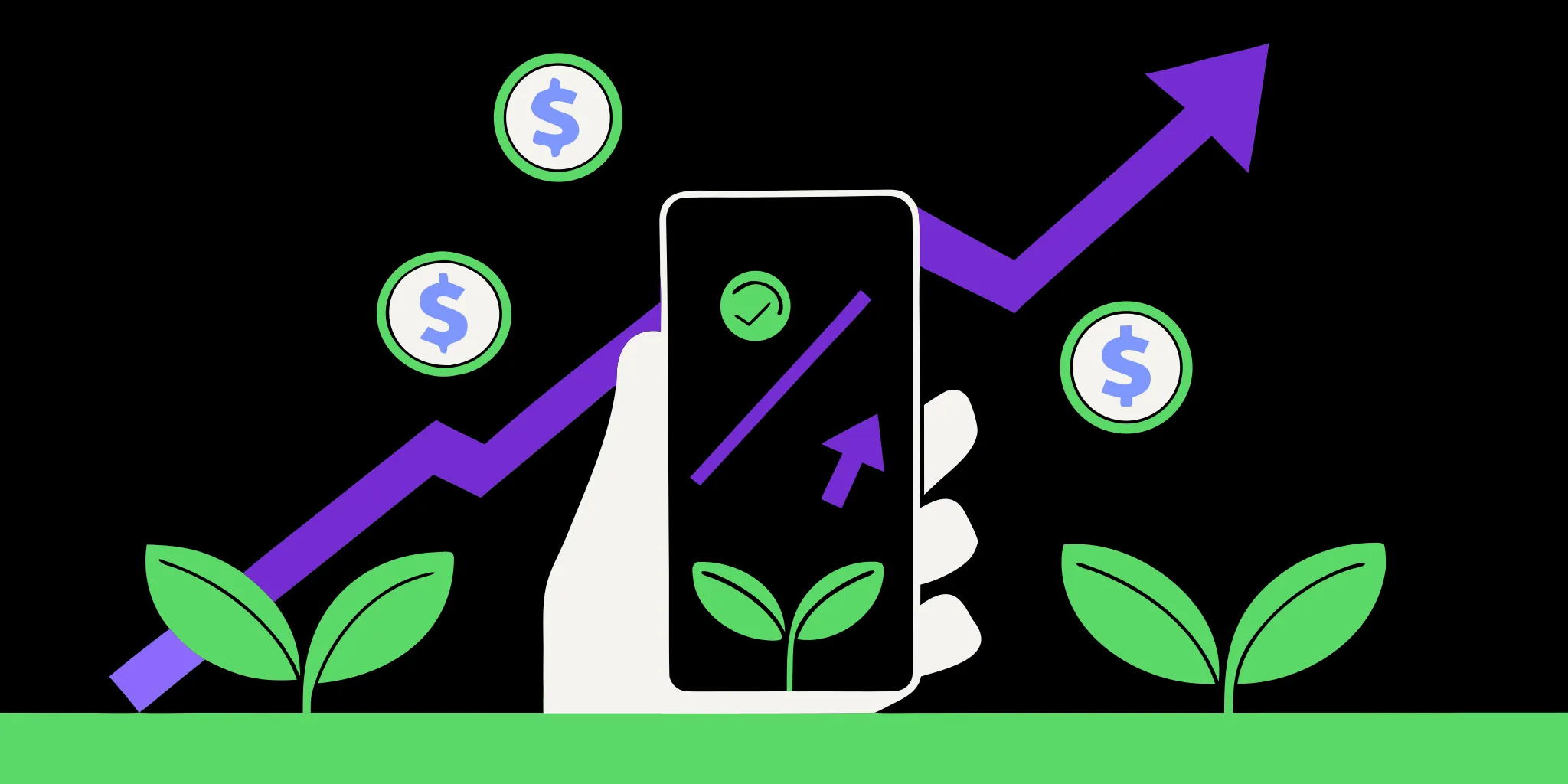

As a nonprofit fundraising professional, you’re well aware of the power of peer-to-peer fundraising as a tool to both raise donations and gain exposure to new supporters that you wouldn’t have reached otherwise. But, are you making the most of your peer-to-peer fundraising strategy?
The fact of the matter is, peer-to-peer fundraising is facilitated almost entirely through technology. However, successful peer-to-peer fundraising depends on much more than birthday fundraisers, messenger bots, dashboards, and other tech tools. To elevate one-time P2P fundraisers to lifelong supporters, you need to craft experiences that truly inspire your online supporters and forge a connection between each user and your organization.
In this guide, we’ll discuss elevating your peer-to-peer fundraising strategy through intentional interactions on Facebook. We’ll cover the following points:
- Understanding Peer-to-Peer Fundraising
- How can you improve your P2P fundraising efforts?
- How GoodUnited Can Supercharge Your Peer-to-Peer Fundraising
Your organization is likely already using peer-to-peer fundraising in your efforts to some extent and familiar with the basic facets. However, a quick overview and definition of the practice can make sure we’re all working with the same foundational understanding.
Let’s dive in.

Understanding Peer-to-Peer Fundraising
A peer-to-peer fundraiser is a campaign in which your supporters raise funds from their personal networks on behalf of your nonprofit. These campaigns draw on your supporters’ personal relationships, so donors may give to support their friend, your mission, or your nonprofit if they’re familiar with it. Because of this, you can raise funds from those already giving to your organization and those who have never heard of it— acquiring new supporters for your nonprofit along the way.
Peer-to-peer fundraisers follow this general process:
- Your organization plans the overall peer-to-peer fundraising campaign. This includes setting a fundraising goal, a deadline, a marketing strategy, and any events that will take place.
- Supporters create personal campaign pages to raise funds from their peers. This could mean you’ve invested in a peer-to-peer fundraising platform and given supporters access to create pages, you’re using a social network such as Facebook fundraising, or you’re using both in an integrated solution.
- These supporters share their fundraising pages with their personal networks and raise donations. The participant should emphasize their connection to your organization and why they’ve chosen to raise funds.
- The fundraiser culminates with some sort of event, whether a challenge or a celebration. For example, you might host a virtual 5k race to end the event, with supporters raising funds in support of their participation.
- The raised funds are directed toward your nonprofit. Depending on the platform you use, a small amount may be deducted to account for processing fees. For example, a peer-to-peer platform may deduct anywhere from 4-6% in fees, while Facebook fundraising doesn’t deduct any processing fees.
At one point, peer-to-peer fundraising was conducted using dedicated peer-to-peer software. However, social networks (such as Facebook) are emerging as a powerful force for raising funds in this manner. Continue reading to learn more.

What is social fundraising?
Social fundraising is a type of peer-to-peer fundraising that draws on the power of social media to raise donations. Social fundraising involves P2P participants sharing their personal fundraisers on social networks and raising funds through those platforms.
Because the success of peer-to-peer fundraising is built on participants’ social connections, social media was a logical addition. After all, social networks are where your participants are already sharing information with their loved ones and therefore come with a built-in fundraising audience.
Facebook has become a key player in peer-to-peer social fundraising due to the platform’s built-in fundraising tools. Not only can Facebook users start one-off fundraisers on behalf of their favorite nonprofits (think: Facebook birthday fundraisers), but the platform can also be used to participate in large-scale peer-to-peer Facebook Challenges.
There are two main ways to use Facebook to facilitate your peer-to-peer fundraiser:
- Invest in a peer-to-peer platform that integrates with Facebook. Each participant is equipped with a peer-to-peer fundraising page on your P2P platform, but they share it with friends and family seamlessly through the Facebook integration.
- Use Facebook’s fundraising tools. Participants create individual Facebook fundraisers coinciding with your overall peer-to-peer fundraising campaign.
With both methods, you benefit from the built-in connections on Facebook. However, nonprofits are increasingly using the platform’s built-in fundraising tools due to the simplified administration and decreased fees.

Why use Facebook as your peer-to-peer fundraising software?
Here are a few reasons why nonprofits use Facebook’s fundraising tools to facilitate their peer-to-peer challenges:

- Facebook is a familiar platform for supporters. To get involved with a Facebook-based peer-to-peer fundraiser, participants simply need to log in to their existing Facebook account. This removes a lot of administrative stress from your team, as you don’t have to set up accounts or teach supporters how to navigate a new platform.
- There are social connections already built-in. On Facebook, participants have likely already “friended” their closest connections. So, rather than hunting down the phone numbers and email addresses of their personal connections and sending a donate link to a rarely-checked inbox or in a crowded text thread, they can share it directly on Facebook.
- Facebook issues tax receipts to all donors. These receipts are automatically generated by Facebook, sent to the email address the platform has on file for the donor, and contain all of the information needed to receive a tax break— the amount, the receiving organization, and a statement noting that no goods or services were provided in return.
- Facebook fundraising doesn’t have processing fees. The average peer-to-peer fundraising platform takes 4-6% in processing fees from each donation. With Facebook, fees for nonprofit organizations are waived— so a $100 donation on Facebook is actually $100 to your nonprofit, instead of the $94 donation you’d receive through a P2P platform.
- You can host dedicated Facebook Challenges. Facebook Challenges are time-bound fundraising events with a low barrier to entry, as they take place entirely through the social media platform. During the Challenge, participants are added to a corresponding group through which they can connect with other supporters that have similar interests as they do. To host one, you simply need to create a Facebook group, advertise it with paid Facebook ads, and engage with your supporters!
And we can’t forget the top benefit of using Facebook for peer-to-peer fundraising: the platform’s built-in tools for supporter engagement. With Facebook, you can engage peer-to-peer participants in-channel on Messenger. You can craft rich experiences to raise your relationships with P2P supporters over time.
That said, it’s important to note that while Facebook is an impactful platform for peer-to-peer fundraising, simply choosing the right platform isn’t enough to ensure your campaign’s success. Continue reading to learn how you can begin engaging with peer-to-peer supporters today.

How do you encourage peer-to-peer fundraising?
Your organization’s P2P participants are, more than likely, not professional fundraisers. This means that they don’t know the tips and tricks to raise funds successfully and they might even feel apprehensive about asking their peers for money.
We recommend the following tips to encourage your peer-to-peer fundraisers toward their goals and build relationships with them in the process.

Thank each peer-to-peer fundraiser participant.
Thanking peer-to-peer participants ensures they feel appreciated for their contributions and opens the door for continued engagement between them and your organization. But to do this on Facebook, you have to discover users that have created peer-to-peer fundraisers on your behalf in the first place.
Let’s walk through an example to illustrate what this would look like: You’ve launched a New Year themed peer-to-peer campaign in which participants raise P2P funds for your organization while walking 10,000 steps per day for the month of January. You’ve asked supporters to create their P2P fundraisers through Facebook, so you can capitalize on the many benefits of the platform.
To thank each participant at the start of the campaign, you’d use Facebook’s “Sort & Filter” tool. You would navigate to your nonprofit’s Facebook page, click on the “Fundraisers” tab, and use the “Sort & Filter” tool to discover the fundraisers that were most recently created and haven’t been thanked yet. Then, you’d go through and thank each newly created fundraiser associated with your campaign.

But what should this thank you include? We recommend writing a personalized note that expresses your gratitude and invites the participant to engage with your organization further. This could mean joining your P2P fundraising group, opting-in to receive future messages, or even checking out other opportunities on your website.
Bonus! Thanking participants is only part of the effort. It’s important to thank donors as well, as you can grow your audience base and continue stewarding them for future engagement. Due to Facebook’s privacy policy, it can be challenging to do this— so, we wrote a guide to thanking donors on the platform.

Share tips for raising more funds.
Your peer-to-peer participants aren’t fundraising professionals. While they’re surely equipped with the best intentions, they don’t have the years of fundraising experience that your team has access to. It’s up to you to make sure your participants have the tools they need to craft an effective appeal, persistently share the opportunity, and blow their fundraising goal out of the water.
We recommend sharing the following tips with your supporters to help them raise more:
- Make the first donation. Did you know that 94% of fundraisers that don’t receive their first gift within the first 24 hours, will end without raising any funds at all? Participants should make a small donation to kick their fundraisers off to a strong start.
- Share the fundraiser regularly. Encourage participants to share their fundraisers multiple times a day with updates, such as when milestones toward their overall goal are hit.
- Add a personal story. While there will be some information auto-filled about your organization (such as your mission statement), encourage participants to add information about why they’re fundraising. What’s their connection, and why should their family and friends donate in support of it?
There are a few different ways to share these tips, such as creating a participant guide and sharing it on your nonprofit’s Facebook page and website, or even within any fundraising groups you create. You can also use Facebook Messenger to share these tips.

Provide recommended messaging to protect your brand.
Your nonprofit worked hard to build a brand that’s reflective of your mission and values. But, when your supporters create Facebook fundraisers, they control the messaging and imagery shared with the fundraiser. Now, we can assume that supporters participating in your peer-to-peer fundraisers are going to speak highly of your organization and mission— but, they’re not professional fundraisers or entrenched in your day-to-day work. They may not have the knowledge to speak about your organization in an informed, impactful manner that supports your existing branding.
Because of this, we recommend providing images and text directly on your nonprofit’s website that supporters can use when creating their peer-to-peer fundraisers on Facebook. To do this, consider the information users are responsible for providing when they create a fundraiser:
- Name of the fundraiser
- Cover photo
- Description of why they’re fundraising for this cause
Your organization’s mission statement will be included and pulled directly from your Facebook page, so it’s important to write a clear description of your organization there. However, you can also provide a recommended title, suggested images, and even tips for writing an impactful fundraiser description on your website. Check out the example below from Stop Soldier Suicide’s 100 Mile Challenge to see what we mean:

What's interesting about the example above is that you don’t have to share long descriptions with supporters to protect your fundraiser’s branding. Something as simple as using standard naming conventions and suggested photos can take your peer-to-peer fundraiser from a disparate effort to a recognizable name in the game.

Create communities for participants to connect.
One of the big benefits of peer-to-peer fundraisers for your supporters is that it’s intended to be a social effort— whether raising gifts from and starting conversations with friends and family or meeting up with other participants to complete a challenge, there is an inherent social aspect to these campaigns.
We recommend taking this a step further by using Facebook Challenges to create a digital community for your participants to engage with one another.
A Facebook Challenge is a time-bound peer-to-peer fundraiser in which participants complete an assigned task while raising funds for your cause.
For example, let’s say you’re hosting a 10k steps per day Facebook Challenge. You’d then create a Facebook group for all participants to join, share their fundraisers, and connect with one another. You could even live stream within the group and host group runs.
This is a beneficial practice as participants can encourage one another, share their own tips for success, and continue bonding over their shared support of your organization beyond the campaign itself.

This tip is especially valuable if you’re hosting a fully virtual fundraiser, as many organizations have during the COVID-19 pandemic. As a society, we’re experiencing distance like never before. Groups are a great way to bring participants together and empower them to bond over their shared interest in your nonprofit. And, as you begin to transition back to in-person events, you can continue using these groups as a motivational tool for participants!

Communicate with participants for the duration of the campaign.
Our final, and perhaps most important, tip is to communicate with your peer-to-peer participants for the duration of their fundraisers. While peer-to-peer fundraising is a largely supporter-driven effort— after all, they’re raising funds rather than you doing so— that doesn’t mean you can take a back-seat role in the effort.
When you stay in contact with participants throughout their campaigns, you can:
- Answer any pressing questions that arise.
- Share encouragement and tips for success.
- Learn more about your peer-to-peer participants.
- Build a relationship with each and every P2P supporter.
Each of these is a step toward building strong relationships between participants and your organization. So, not only are they more likely to fundraise for you again in the future— but, they might even support your organization in other ways as well!
But, how can you communicate with participants during their campaign? We recommend using Facebook Messenger, but not all organizations have the time or resources on hand to do so effectively. That’s where GoodUnited comes in!

How GoodUnited Can Supercharge Your Peer-to-Peer Fundraising
At GoodUnited, we’ve seen firsthand the impact that conversational messaging can have on the success of peer-to-peer fundraisers. By connecting with your participants where they spend time— on Facebook— you can craft a memorable experience for each participant. This has benefits for participants and your organization alike: participants feel appreciated and encouraged to reach their goals, and you are able to understand your supporters and grow your relationship with each and every one.
With the assistance of GoodUnited, nonprofits have:
- Collected 74% more participant emails for future contact
- Inspired 94% of participants to fundraise again
- Raised over $500 million to date
So, what are these services that can supercharge your nonprofit’s peer-to-peer fundraising? We offer:

- Thank you messages. We thank 100% of your organization’s Facebook peer-to-peer participants and invite them to continue engaging with your organization for the duration of the campaign via Messenger.
- Custom messaging sequences. When users opt-in to continue connecting on Messenger, they’re greeted by a custom messaging sequence full of tips, gratitude, and encouragement to help them fuel their campaigns across the finish line.
- Surveys and additional information. Through this messaging sequence, we also collect additional information from P2P participants through surveys and questions. We help you understand who is fundraising for your organization and why.
- Facebook Challenge management. If you’re using Facebook Challenges to raise funds and raise your relationships with social supporters, we can help. This includes managing Facebook ad campaigns, moderating accompanying groups, and messaging your participants for the duration and beyond.
GoodUnited offers the only turn-key social fundraising solution to empower your organization to build relationships with social supporters at scale. We help you understand your social supporters, create experiences that inspire these supporters, and grow relationships across the board. With GoodUnited, you can raise your relationships with supporters on Facebook and transform your social fundraising program.
If you’re ready to supercharge your organization’s peer-to-peer fundraising strategy on Facebook, contact the GoodUnited team today. In the meantime, continue researching this topic with the following additional resources:
- Virtual Peer-to-Peer Fundraising: 6 Best Practices. Virtual peer-to-peer fundraising is a specific type of no contact, fully online P2P effort. Learn more and find a few best practices in this guide.
- 20+ Best Virtual Fundraising Ideas for 2021 & Beyond. Is your virtual fundraising lineup getting boring? Check out this list of virtual fundraising ideas to shake it up.
- Virtual Fundraising Events: 20+ Ideas for Nonprofits. Considering hosting a fully online event this year? Check out this list of ideas to fuel your strategy.



















